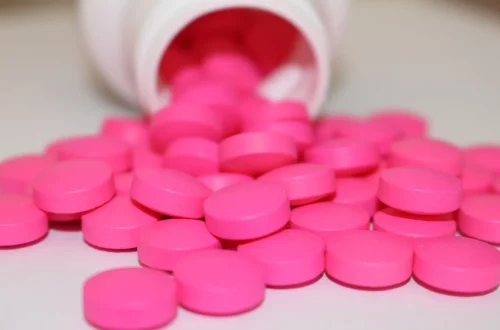
Essential Bodyguard Safety Gear for Maximum Protection and Efficiency
In today’s world, personal security has become an essential consideration for many individuals, from high-profile celebrities to corporate executives and everyday citizens. As threats to safety continue to evolve, so does the importance of having trained bodyguards equipped with the right gear. The effectiveness of a bodyguard goes beyond mere physical presence; it hinges on their ability to react swiftly and efficiently in potentially dangerous situations. This is where safety gear comes into play, acting as a first line of defense against various risks.
The right equipment not only enhances the bodyguard’s ability to protect but also instills confidence in those they are protecting. Whether it’s advanced communication devices, protective clothing, or tactical tools, each piece of gear serves a specific purpose in ensuring maximum safety. The integration of technology and strategic design in bodyguard safety gear has revolutionized the industry, making it more efficient and responsive to the ever-changing landscape of threats. From urban environments to high-stakes events, the importance of appropriate safety equipment cannot be overstated.
As we delve deeper into the essentials of bodyguard safety gear, it’s crucial to recognize that the stakes are high. The right equipment can mean the difference between life and death, security and vulnerability. Understanding the various tools available and their respective uses is vital for anyone involved in personal security. With a focus on efficiency and protection, let’s explore the indispensable gear that every bodyguard should consider.
Protective Clothing: The First Line of Defense
When it comes to personal protection, the clothing a bodyguard wears is paramount. Protective clothing is designed to shield the wearer from potential threats while allowing for mobility and comfort. Bodyguards often find themselves in situations where they may face physical confrontations or harsh environmental conditions. Therefore, investing in high-quality protective gear is essential for their safety and effectiveness.
One of the most crucial elements of protective clothing is ballistic vests. These vests are designed to absorb and deflect bullets, providing a significant advantage in high-risk scenarios. Modern ballistic vests are lightweight and can be worn discreetly under clothing, making them ideal for situations where a low profile is necessary. Additionally, many vests come with modular designs, allowing bodyguards to add or remove plates based on the level of threat they anticipate.
Beyond ballistic protection, bodyguards also need clothing that offers protection from the elements. This includes waterproof jackets, breathable fabrics, and durable footwear. Weather can play a significant role in a personal security situation, and being prepared for rain, snow, or extreme heat can affect the bodyguard’s ability to perform their duties effectively.
Moreover, tactical clothing often includes multiple pockets and compartments for easy access to essential gear, such as communication devices, first-aid kits, and self-defense tools. The right clothing not only enhances a bodyguard’s functionality but also helps maintain professionalism and authority in various environments.
In summary, protective clothing is a fundamental aspect of a bodyguard’s safety gear. It ensures they are shielded from potential threats while allowing them to perform their duties effectively. Investing in high-quality, tactical clothing can significantly enhance a bodyguard’s ability to protect their client, making it a crucial consideration in personal security.
Communication Devices: Staying Connected
Effective communication is critical in any security operation, and this is where communication devices play a vital role. Bodyguards must remain in constant contact with their clients and team members to coordinate movements, share information about potential threats, and react swiftly to changing situations. Therefore, having reliable and efficient communication tools is non-negotiable.
Two-way radios are a staple in the bodyguard’s toolkit. Unlike traditional mobile phones, two-way radios offer immediate communication without the delay of dialing or connecting to a network. This instant communication can be critical in emergency situations where every second counts. Modern two-way radios are designed to operate over long distances and can be equipped with earpieces for discreet communication, ensuring that conversations remain private and undetected.
In addition to two-way radios, bodyguards may also utilize smartphones equipped with secure communication apps. These apps can provide encrypted messaging, location tracking, and other features that enhance situational awareness. Using smartphones allows bodyguards to leverage technology for real-time updates and intelligence sharing, further improving their ability to respond to threats.
Another essential communication tool is the use of GPS devices. These allow bodyguards to track the movements of their clients and ensure they are following the safest routes. In high-risk situations, having access to real-time location data can be invaluable, enabling bodyguards to navigate complex environments while maintaining a protective perimeter around their clients.
In conclusion, communication devices are a cornerstone of effective personal security. They enable bodyguards to stay connected with their team and clients, ensuring a coordinated response in any situation. Investing in high-quality communication tools is essential for maximizing safety and efficiency in the field.
Tactical Tools: Enhancing Response Capabilities
The effectiveness of a bodyguard often hinges on their ability to respond to threats quickly and efficiently. This is where tactical tools come into play. These tools are designed to provide bodyguards with the means to protect their clients while also ensuring their own safety. From self-defense weapons to specialized equipment, tactical tools are an integral part of a bodyguard’s gear.
Self-defense weapons, such as pepper spray or stun guns, offer bodyguards non-lethal options for incapacitating potential threats. These tools are designed to provide a quick and effective response without causing permanent harm, allowing bodyguards to neutralize a situation while minimizing risk. It is essential for bodyguards to receive proper training in the use of these tools to ensure they can deploy them effectively when needed.
In addition to self-defense weapons, bodyguards may also carry tactical flashlights. These flashlights are often designed to be durable, waterproof, and compact, making them ideal for various environments. A tactical flashlight can serve multiple purposes, from illuminating dark areas to temporarily blinding an assailant, providing bodyguards with a critical advantage in low-light situations.
Another important tactical tool is the first-aid kit. Bodyguards must be prepared for any situation, including medical emergencies. A well-stocked first-aid kit enables them to provide immediate assistance to their clients or others in need, potentially saving lives in critical moments. Bodyguards should receive training in first-aid and CPR to enhance their ability to respond effectively to medical emergencies.
Ultimately, tactical tools are essential for a bodyguard’s operational effectiveness. They enhance a bodyguard’s response capabilities and provide the means to protect their clients in various situations. By equipping themselves with the right tools and receiving proper training, bodyguards can ensure they are prepared for any challenge that may arise.
Surveillance Equipment: Proactive Protection
In the realm of personal security, proactive measures are often more effective than reactive ones. This is where surveillance equipment becomes invaluable. By utilizing advanced surveillance tools, bodyguards can monitor their surroundings, identify potential threats, and take preventative action before a situation escalates.
CCTV cameras and motion detectors are common forms of surveillance equipment that bodyguards can use to maintain situational awareness. These devices allow for real-time monitoring of a client’s environment, providing critical information about potential threats. By analyzing footage and data from these devices, bodyguards can make informed decisions about their client’s safety.
In addition to stationary surveillance systems, bodyguards may also utilize portable surveillance tools, such as drones. Drones equipped with cameras can provide an aerial view of an area, allowing bodyguards to assess threats from a distance. This capability is especially useful in crowded environments or during public events where visibility may be limited.
Moreover, technology has advanced to the point where personal security apps can provide real-time alerts and location tracking. These apps enable bodyguards to monitor their clients’ movements and receive notifications about any unusual activity in their vicinity. This proactive approach allows for timely interventions and enhances overall security.
In conclusion, surveillance equipment is crucial for proactive personal security. By leveraging advanced technology, bodyguards can maintain awareness of their surroundings and identify potential threats before they escalate. Investing in reliable surveillance tools is essential for maximizing safety and ensuring effective protection for clients.
In summary, the right safety gear is vital for bodyguards to perform their duties effectively. From protective clothing and communication devices to tactical tools and surveillance equipment, each component plays a crucial role in ensuring maximum protection and efficiency. As threats continue to evolve, so must the gear that bodyguards use, making it imperative for professionals in this field to stay informed and equipped with the best tools available.
**Disclaimer:** This article is not intended as medical advice. For any health-related issues, please consult a qualified healthcare professional.




